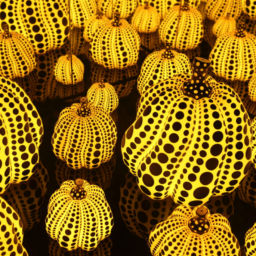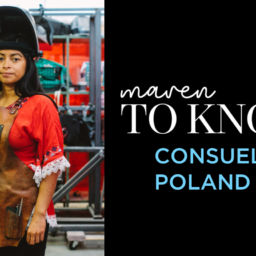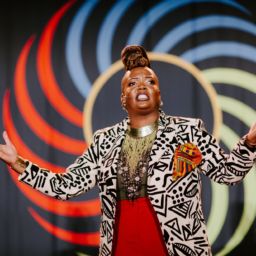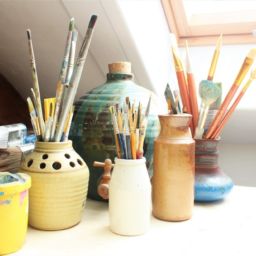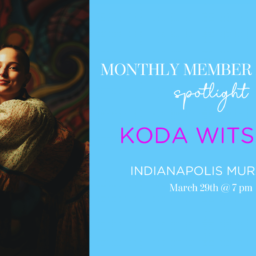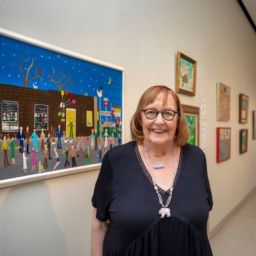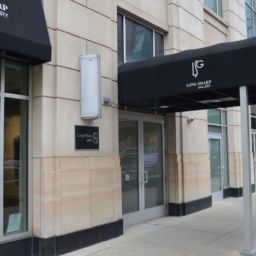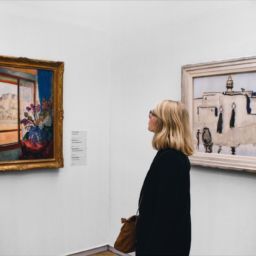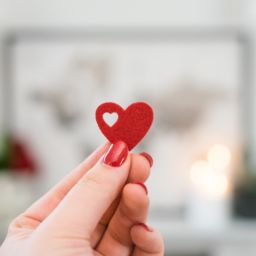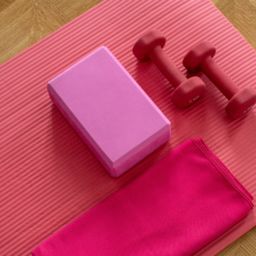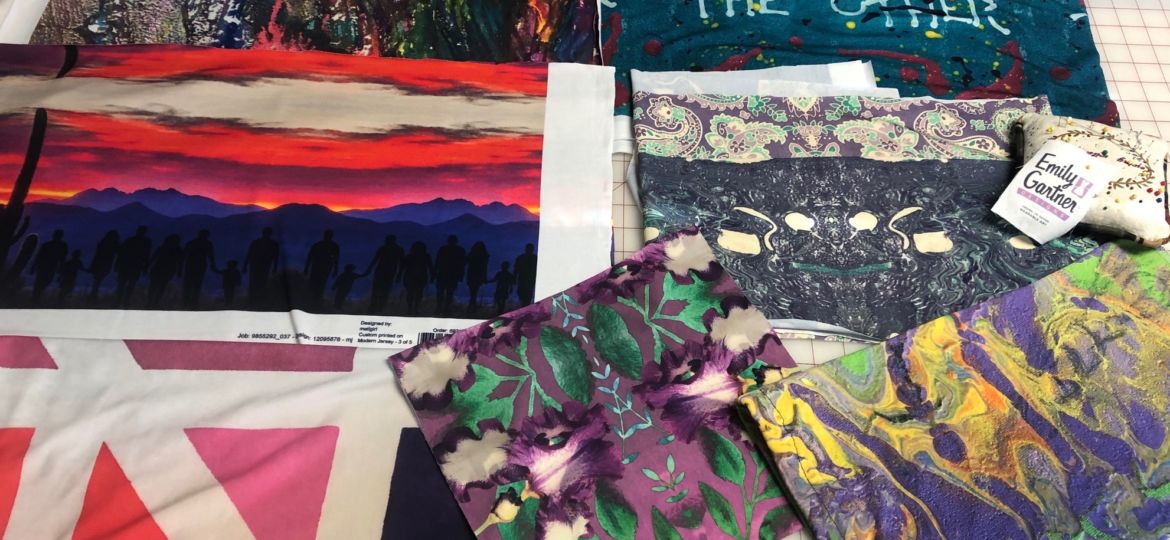
This story was created in partnership with Hancock Health.
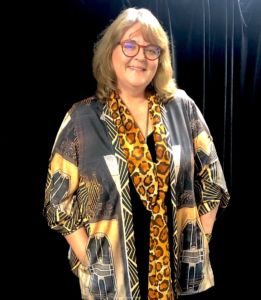
If you ever have the chance to visit Indianapolis-based textile artist and fashion designer Emily Gartner in her studio, you’ll likely be captivated by her innovative fabric designs and her creativity, but you may also be struck by just how good-natured and downright kind she is. Gartner has shown her designs in Milan and recently staged a dynamic runway show during Indiana Fashion Week, but she does not give off an ounce of fashion “diva” attitude; instead, she is endearing, welcoming, and warm.
This unique combination of artistic creativity and a gentle, down-to-earth demeanor made Gartner the perfect choice to help lead four women in an innovative “art as therapy” initiative.
The brainchild of Hancock Health, the “Cancer Scarves” program paired Gartner with four women who are currently undergoing cancer treatment at the Sue Ann Wortman Cancer Center to create personal, specially-designed headscarves that each woman could wear as she underwent her cancer journey.

Gartner was compelled to participate not only because she has lost someone close to her to a rare form of cancer, but also because she was inspired to help these women discover a clearer sense of their identity through art. “To me, the project is not about defining a person’s diagnosis of cancer, it’s about defining who they are as a person in general: their talents, their skills, and their love,” she said.
The four female cancer patients who collaborated with Gartner ranged in age from mid-thirties to mid-sixties, so she tailored her approach to each woman and tried to make their time together as unique as possible. “It’s such a personal experience for someone to share their cancer journey, so the trust is a very big deal,” Gartner said, adding, “I just wanted them to know that I cared and that we were going to do something fun while I was there.”
The actual process of creating a custom headscarf with Gartner started with an inspirational meeting, where the designer worked with each patient to find themes and colors that were meaningful to her, and then Gartner instructed and encouraged each woman to create an original painting on canvas that would become the design on the fabric of their headscarf.
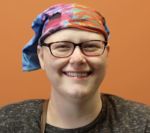
Marie Wright was the youngest of the women who worked with Gartner. She is battling breast cancer that has metastasized to her lungs. “In spite of everything, Marie brought so much positive energy to our meetings,” Gartner explained, smiling as she remembered their time together.
“I wasn’t really sure how the whole process was going to be,” Wright admitted, but regardless, she agreed to get involved. On Wright’s finished canvas are the words “One foot in front of the other,” which is a personal mantra that she repeats to herself. “If you’re having a rough day, or you’re tired, it’s just one more foot,” she explained.
admitted, but regardless, she agreed to get involved. On Wright’s finished canvas are the words “One foot in front of the other,” which is a personal mantra that she repeats to herself. “If you’re having a rough day, or you’re tired, it’s just one more foot,” she explained.
Another woman that participated in the program was named Sue, and Gartner noted that since she was from the Southwest, Sue gravitated towards bright colors and geometric shapes. “She really enjoyed coming to see me because it was her joyful moment to express herself, and it was empowering because it was about her,” Gartner said.
 In the end, each of the four designs looked completely different from one another—in the best way. “Each woman’s journey and support systems were so extremely different, so it makes perfect sense that their paintings would be so unique,” Gartner explained, adding, “When they all saw their finished paintings, and again when they saw their final fabrics, they all just lit up and were so excited.”
In the end, each of the four designs looked completely different from one another—in the best way. “Each woman’s journey and support systems were so extremely different, so it makes perfect sense that their paintings would be so unique,” Gartner explained, adding, “When they all saw their finished paintings, and again when they saw their final fabrics, they all just lit up and were so excited.”
The experience was also personally moving for Gartner. “This project has meant so much to me because I learned just how empowering it is for women to empower other women,” Gartner said. She has recently begun working with Little Red Door Cancer Agency on another art program involving headscarves. “During this process, we laughed, we cried, and together we created something beautiful, and I want that to carry on with me and be a part of what I continue to offer in my business.”
Stephanie Groves is a regular contributor to Indy Maven.
All of our content—including this article—is completely free. However, we’d love if you would please consider supporting our journalism with an Indy Maven membership.










